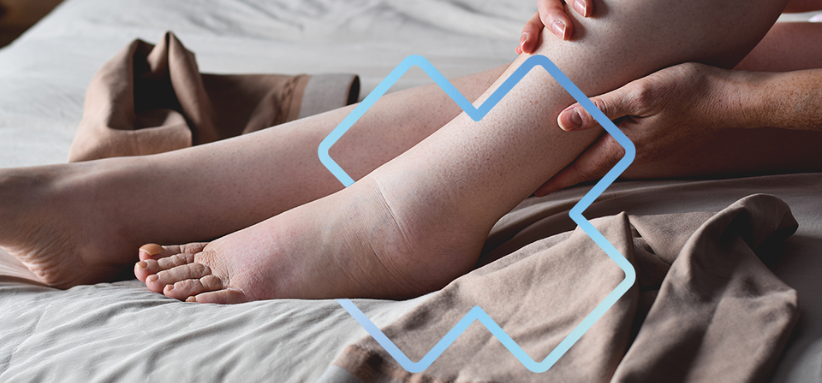Edema is swelling of a part of the body and can be a symptom of venous insufficiency or lymphedema. Most often, it affects an arm or a leg. Combined decongestant therapy is offered in physiotherapy or massage therapy and is the best treatment to reduce or eliminate this type of swelling and its related symptoms.

What are the symptoms of venous insufficiency?
The easiest sign of venous insufficiency to identify is swelling in the foot or lower leg. In the absence of swelling, a feeling of heaviness in the legs may be a warning symptom.
Venous insufficiency is defined as poor circulation of blood in the veins. It is a condition that affects more women than men. If we rarely know the exact cause, we do know that obesity, age, pregnancy and family history are factors that increase the risk.
Chronic venous insufficiency is usually manifested by two main types of venous disease:
- Post-thrombotic disease which can occur after deep vein thrombosis, i.e. blockage of blood flow in a deep vein caused by a clot.
- So-called “varicose veins” which is associated with weakness of the venous walls.
How do you know if you have lymphedema?
The main symptom of lymphedema is a gradual or sudden swelling of a part of the body, most often an arm or a leg. The swelling is often greater in hot, humid weather or after physical exertion. You may also feel heaviness, tightness, pain, stitches, or increased tenderness in the affected area.
Lymphedema can develop when lymph vessels or nodes are damaged by injury or surgery. The ability to transport fluids in the lymphatic system then decreases, causing the affected area to swell. This is called edema.
Many women develop lymphedema in the arm or chest after surgery or radiation therapy for breast cancer (consult our article on the subject). The risk of lymphedema increases with the number of lymph nodes removed during surgery, the size of the area irradiated by radiotherapy and its intensity. In more than 90% of cases, lymphedema appears within 2 years of treatment.
Lymphedema can also be a side effect of chronic venous insufficiency.
How are venous insufficiency and lymphedema treated?
Expert advice: Keep moving
Whether for venous insufficiency or lymphedema, studies are unanimous about the importance of doing physical activity despite the presence of edema. Regular physical activity helps, in parallel with other treatment approaches, better control the edema and reduces the associated discomforts.
Combined decongestant therapy
Combined decongestant therapy is the most effective treatment for venous insufficiency and lymphedema. It reduces swelling, associated symptoms and their potential complications such as infection, for example.
Physiotherapists and massage therapists who have advanced training in this subject can offer combined decongestant therapy. Their treatments may include, among other things, manual lymphatic drainage techniques, the use of bandages or compression garments as well as exercises adapted to your condition.


